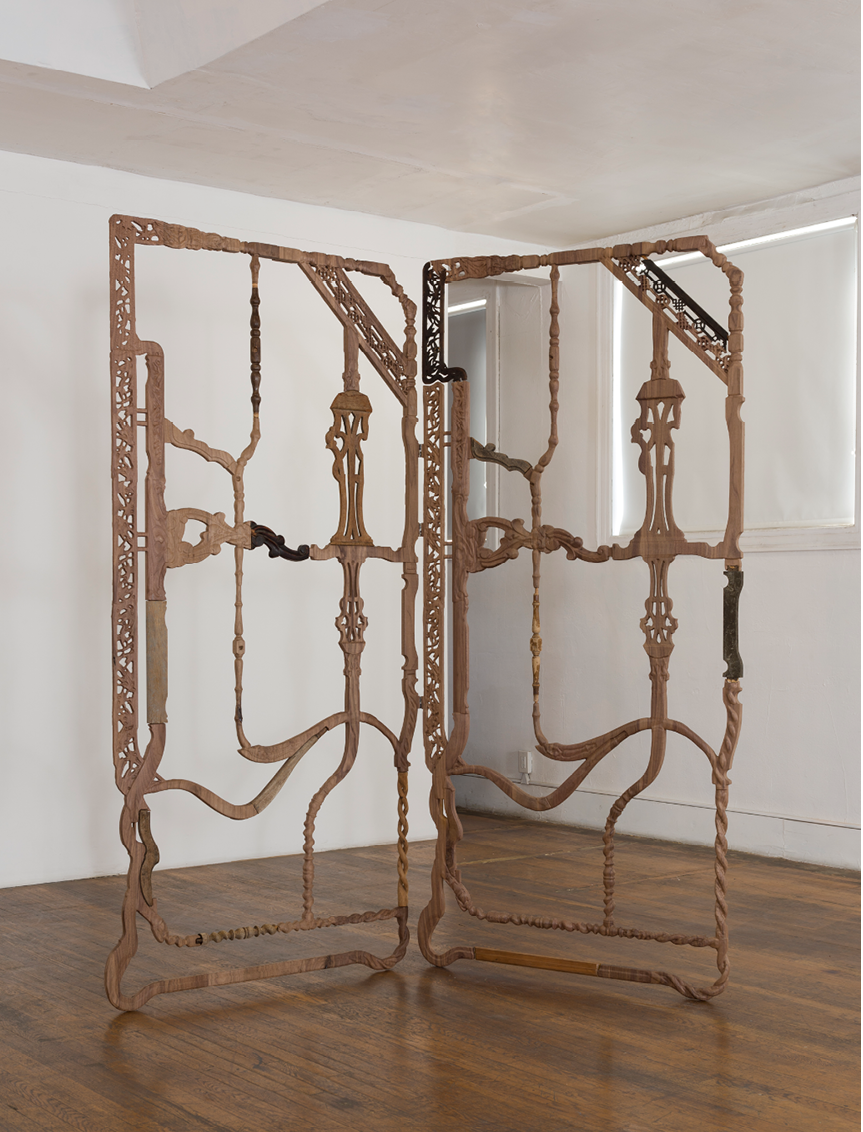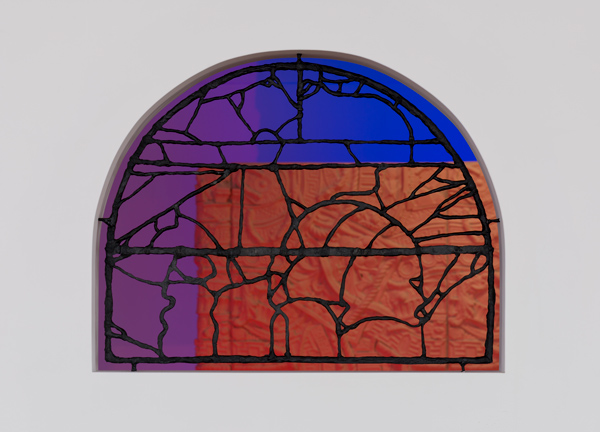“Many years ago,” Maggie Nelson writes in her memoir, The Argonauts, “[the poet Anne] Carson gave a lecture …at which she introduced (to me) the concept of leaving a space empty so that God could rush in …” Nelson writes that she “fastened” to the idea, which she thought seemed like “the thing that [could] keep you going, in heart or art, for years.”
The notion of “leaving a space empty” for holiness to come flooding in is a beguiling one, but it also contains a description of human consciousness as abundant and crowding. Are people (or poets) so world-conquering that we can punch out a cubby for the divine? Or, instead, do the gods pummel down upon us in cascades, so that all we can do is construct crushable edifices from which we peer out, maybe trembling?
The artist Cayetano Ferrer, known for his spare and suggestive installations, offers us the second reading of spirituality or cognition in his radiant show at Commonwealth & Council, “Memory Screen.” Entering into Commonwealth’s joyous atmosphere (presided over by the welcoming Young Chung), the viewer first encounters Mmry Scrn (2019), a door built out of reclaimed wooden furniture parts, newly molded fixtures and negative space. The screen’s carved dowels create the thinnest frame for the world, and looks constructed out of calligraphy. Mmry Scrn faces three skeletons of stained glass windows (Window, 2019), which Ferrer placed in a wall halfway across the gallery. He formed these apertures out of a combination of epoxy and wire that resembles the lead bones typically supporting tinted windows in cathedrals. Modeled on actual stained glass rosettes, these borrow their colored lights from a separate room, which he irradiated with tones of orange, blue and red. The viewer can stand at the farthest edge of the clearance, looking between the lacunae of the screen, to the windows’ jewel-toned mesh, and into the deeply-lit chamber beyond.
What’s there? Moving past the windows, we find what appears to be a grand structure made of floral reliefs, Greek symbols, chains and ropes. It is a wall—no, a gate (Gates of Hell Movie Set [1:5 scale], 2019)—as it contains at its center a small door, too low even for a child to enter without ducking. Unlike the frangible screen and windows, this object (from a Warner Brother’s mold) seems more like Carson’s perception, as it only offers God a little crawlspace. But when you go behind the barrier, you see the hell gate is made of thin plywood.
That Ferrer can enchant us with our own frailty—the slender huts that we shelter under, the breakable spectacles out of which we peer at existence—offers happiness in the space where Carson says God lurks. His vision of the human mind contains a consolation greater, I think, than the one that thrilled Nelson, since it finds beauty in the small and contingent, rather than aggrandizement.



